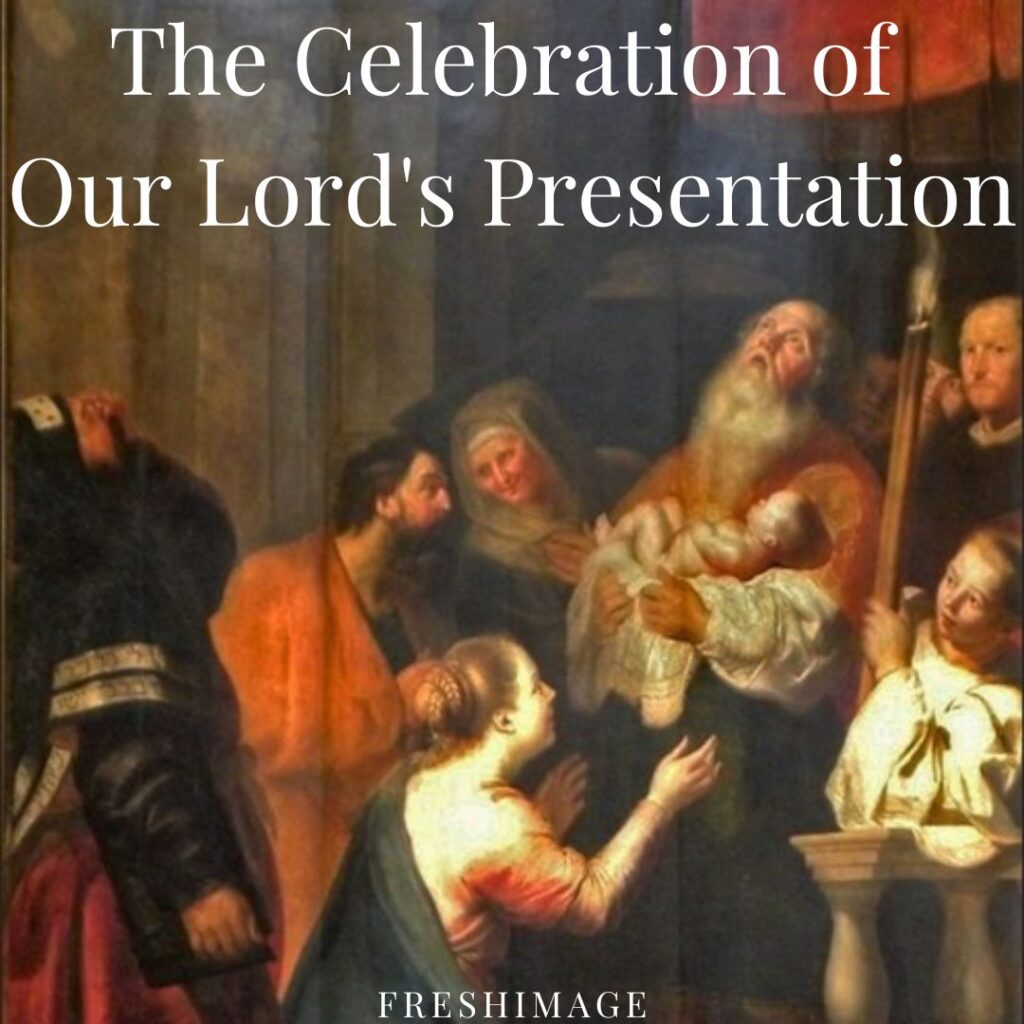
As the season of Christmas is definitively over, one can ask a perennial question: if we take December 25 as the first (and not the last) day of the Christmas season, what is the ending day? Ordinary time returns with a green liturgical color the day after the Baptism of the Lord observed this year of January 9. Originally, the season of Christmas was observed a few weeks longer, however, until the day of the Presentation of the Lord – February 2.
It is unfortunate, that the Feast of the Presentation of the Lord, one of the oldest feasts of the Church, dating back to 4th century Jerusalem, so rich in content, packed with highly significant theological meaning, is today barely noticeable in many communities. The key scriptural reference is Luke’s account of the holy family visit to Jerusalem temple (see Luke 2:22-38). There were two reasons for the visit. According to the Hebraic law, a Jewish women had to undergo a purification process, forty days after delivering a boy (see Leviticus 12:1-8). That process entailed two stages: a. offering a sacrifice of a small animal b. ritual washing. Another reason to go to the temple was that the law also required every newborn boy to be formally consecrated to God (see Exodus 13:2, 11-16).
The visit of the Holy Family in Jerusalem would have been a typical and entirely-predicable event–one of many occurring in the temple each day–if not for the reaction of two elderly people: Simeon and Anna (see Luke 2:25-35 & 36-38). They both recognized the child as a long-awaited Messiah. The act of public recognition of Jesus was the ultimate task in Simeon’s life. When it happened, he was finally allowed to depart this world in peace and go to the eternal rest (see Luke 2:39-33).
There are several significant motives in the story of the encounter of Simeon and Anna with Jesus and his parents. Both Simeon and Anna were devout people, obediently fulfilling the precepts of the Old Law. They were both awaiting, however, the one who will usher the faithful into the New Covenant. In his words, Simeon refers to Jesus as “a light for revelation to the Gentiles and for glory to your people Israel” (Luke 2:33). The same proclamation returns in the opening rite of the Easter Vigil liturgy, in the procession following the lighting of the paschal candle: “The Light of Christ. R/: Thanks be to God” (St. Paul Daily Missal, 519).
The prophetic words of Simeon also forecast Mary’s future suffering (Luke 2:35b), which is an inseparable part of Mary’s mission: to bring Jesus to the world and remain with him until the end of his earthly journey. Simeon’s words are also a powerful reminder that Mary and Jesus are constantly together, as she is a necessary part of Jesus’ salvific action. This fact is a chief reason for Marian overtones of the Feast of the Presentation that gradually developed. One illustration of the historical process would be a decision of Alonso Fernández de Lugo, Spanish governor of Tenerife and La Palma Island, to dedicate the Feast to Mary entirely. That happened in 1497.
The focus on Mary also helps us to come closer to the great mystery of the incarnation. The concept of God who also took a human form was shocking to many, even at the earliest stage of a historical development of Christianity. A first question deals with how to understand the very Person of Jesus. The idea of Jesus’ dual nature—divine and human-was attacked from both the people who were not ready to accept Jesus as God, and those who did not recognize the Lord as fully human. Such a tug of war between the two camps lasted for a long time until the Council of Chalcedon formally declared in AD 451 that Jesus was just one person who possessed both human and divine nature.
A second question arose about the purpose of the incarnation: why Jesus assumed a human nature? The most succinct answer seems to be provided by the letter to the Hebrews: “because he himself has suffered and been tempted, he is able to help those who are tempted” (Hebrews., 2:17-18). Consequently, Council of Ephesus in 431 had also officially attributed to Mary a Greek title Theotokos (God-bearer), and Latin title Genitrix Dei (Mother of God), in order to clearly state that the Son of God had indeed assumed the fullness of human nature and been born through her. The traditional anthem Beata Genitrix Dei (Blessed Mother of God), used as a response during Christmas and Presentation of the Lord, connects these two essential liturgical celebrations in a significant fashion.
-Andrzej
FRESHImage is happy to present a concert in celebration of Our Lord’s Presentation. Music will be performed by Vox Fidentium ensemble at the direction of Andrzej. Be sure to visit the concert page here.

Andrzej Zahorski is Director of Music at St. Anselm Parish in St. Louis, MO. He holds a doctorate of musical arts from Stanford University.
Thanks so much, Dr. Zahorski, for this beautiful explanation of Our Lord’s Presentation!
Can’t wait for the concert tomorrow!!
Andzejz,
What a succinct and appropriate exposition
of the significant theology embedded with
the Presentation feast day.
Michael Belongie- a former instructor and contemplative friends
with Tony and Vanessa.